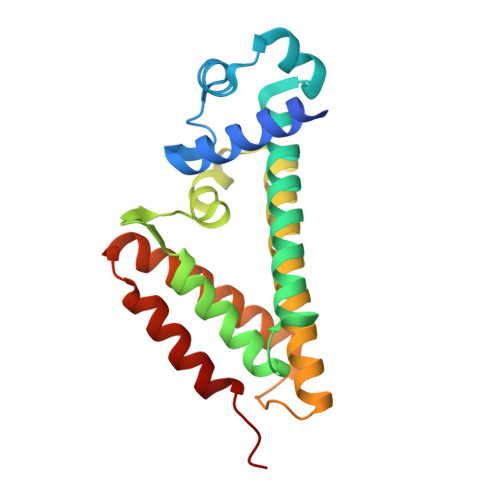Does the Transcription Factor NemR Use a Regulatory Sulfenamide Bond to Sense Bleach?
Gray, M.J., Li, Y., Leichert, L.I., Xu, Z., Jakob, U.(2015) Antioxid Redox Signal 23: 747-754
- PubMed: 25867078
- DOI: https://doi.org/10.1089/ars.2015.6346
- Primary Citation of Related Structures:
4YZE - PubMed Abstract:
Reactive chlorine species (RCS), such as hypochlorous acid (i.e., bleach), are antimicrobial oxidants produced by the innate immune system. Like many redox-regulated transcription factors, the Escherichia coli repressor NemR responds to RCS by using the reversible oxidation of highly conserved cysteines to alter its DNA-binding affinity. However, earlier work showed that RCS response in NemR does not depend on any commonly known oxidative cysteine modifications. We have now determined the crystal structure of NemR, showing that the regulatory cysteine, Cys106, is in close proximity to a highly conserved lysine (Lys175). We used crystallographic, biochemical, and mass spectrometric analyses to analyze the role of this lysine residue in RCS sensing. Based on our results, we hypothesize that RCS treatment of NemR results in the formation of a reversible Cys106-Lys175 sulfenamide bond. This is, to our knowledge, the first description of a protein whose function is regulated by a cysteine-lysine sulfenamide thiol switch, constituting a novel addition to the biological repertoire of functional redox switches.
Organizational Affiliation:
1 Department of Molecular, Cellular, and Developmental Biology, University of Michigan , Ann Arbor, Michigan.














